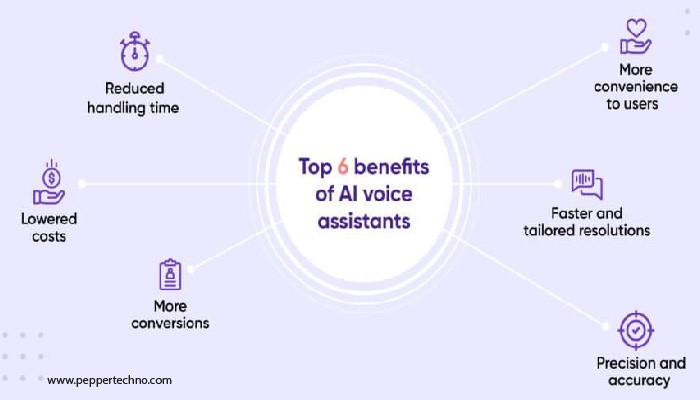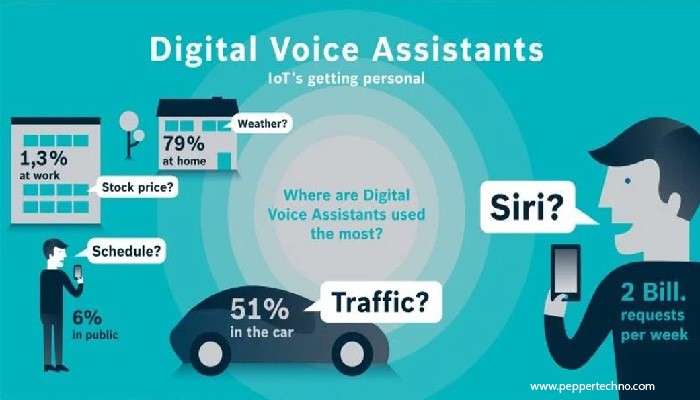Examining the Expansion of Voice Assistant Usage
We will discuss Examining the Expansion of Voice Assistant Usage. In recent years, voice assistants have transformed from novel gadgets to indispensable tools in our daily lives. From setting reminders to controlling smart home devices, their utility continues to expand rapidly. This article delves into the various facets of this expansion, exploring the reasons behind it, the current state of affairs, and future projections.

The Rise of Voice Assistants
Voice assistants have come a long way since their inception. Initially introduced as voice-activated search tools, they now encompass a wide array of functions, ranging from entertainment to productivity. Companies like Amazon, Google, Apple, and Microsoft have spearheaded this revolution with their respective platforms: Alexa, Google Assistant, Siri, and Cortana.
Factors Driving Expansion
Several factors have contributed to the widespread adoption and expansion of voice assistant usage:
Advancements in Natural Language Processing (NLP): Improved NLP algorithms enable voice assistants to better understand and respond to user commands, enhancing their overall usability.
Integration with Smart Devices: The proliferation of smart home devices has facilitated voice assistant usage, allowing users to control their homes with simple voice commands.
Increased Accessibility: Voice assistants have become more accessible across various devices, including smartphones, smart speakers, wearables, and even cars, making them readily available to a broader audience.
Growing Ecosystem of Skills and Apps: The expansion of voice assistant ecosystems with third-party skills and apps has diversified their capabilities, catering to a wide range of user needs.
Current State of Voice Assistant Usage
As of now, voice assistants have permeated multiple aspects of daily life:
Smart Home Control: Voice commands enable users to control smart home devices such as lights, thermostats, and security cameras, fostering convenience and energy efficiency.
Information Retrieval: Voice assistants serve as virtual assistants, providing quick answers to questions, weather updates, news briefings, and more.
Productivity Tools: Users can set reminders, schedule appointments, send messages, and make calls hands-free, boosting productivity and efficiency.
Entertainment and Media Consumption: Voice assistants facilitate hands-free control of music playback, podcast streaming, audiobooks, and video content on compatible devices.
E-commerce and Shopping: Voice commerce, or v-commerce, is on the rise, allowing users to shop for products and services using voice commands, further blurring the lines between online and offline shopping experiences.
Challenges and Limitations
Despite their widespread adoption, voice assistants still face certain challenges and limitations:
Privacy Concerns: Voice assistants collect and process user data, raising concerns about privacy and data security, especially regarding recordings of sensitive conversations.
Accuracy and Reliability: While advancements in NLP have improved accuracy, voice assistants occasionally misinterpret commands or fail to understand accents and dialects accurately.
Lack of Contextual Understanding: Voice assistants struggle with contextual understanding, often requiring users to provide specific commands or prompts for desired actions.
Integration Issues: Compatibility issues and fragmented ecosystems can hinder seamless integration with third-party devices and services, limiting the overall user experience.
Future Directions
Despite these challenges, the future of voice assistant usage looks promising:
Continued Innovation: Ongoing advancements in NLP, artificial intelligence, and machine learning will further enhance the capabilities and intelligence of voice assistants, enabling more natural interactions and personalized experiences.
Expansion into New Domains: Voice assistants are poised to expand into new domains such as healthcare, education, and automotive, offering tailored solutions and services in these sectors.
Improved Privacy Measures: As concerns over privacy and data security persist, companies are likely to implement stricter privacy measures and give users more control over their data, enhancing trust and transparency.
Enhanced Integration: Seamless integration with a broader range of devices and services will enrich the voice assistant ecosystem, providing users with a more cohesive and interconnected experience across different platforms.
Global Adoption and Localization: Voice assistants will continue to gain traction globally, with localization efforts ensuring support for a diverse range of languages and cultural contexts.
Conclusion
The expansion of voice assistant usage represents a significant paradigm shift in how we interact with technology. With their increasing ubiquity and evolving capabilities, voice assistants are poised to play an even greater role in shaping the future of human-computer interaction. By addressing current challenges and embracing future opportunities, voice assistants have the potential to become indispensable companions in our daily lives, revolutionizing the way we live, work, and connect with the world around us.



